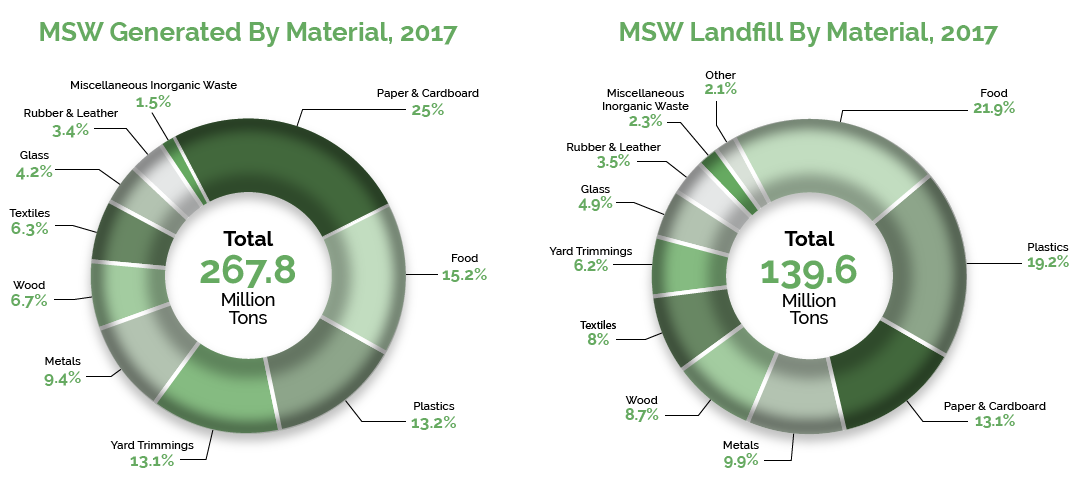The United States sends more food to landfills than any other material. When organic material like food breaks down in landfills it creates methane. If a landfill is not equipped to capture that methane, it will escape into the atmosphere and become a greenhouse gas over 20 times more potent than carbon dioxide.
The charts below are from the EPA’s: National Overview, Facts and Figures on Materials, Wastes, and Recycling data for 2017 (most recent national data available, next update will be in 2021). The first chart shows total material generated and the second chart shows the total amount of material from the same categories that went to landfills.
Notice how in the first chart “Food” makes up a significant percentage along with “Paper and Paperboard”, “Yard Trimmings” and “Plastics”.

The second chart shows the positive impacts of recycling and composting in some of the categories. Notice how while “Yard Trimmings” is close to “Food” in total generation, it is considerably less in total amount landfilled. This is because the majority of the composting programs in the United States today only accept yard waste, and do not accept food waste. Also notice how “Food” and “Plastics” both increase as a percentage of total material landilled once the data is adjusted for recycling and composting. This shows how infrequently (on a relative basis) “Food” is getting composted and “Plastics” are getting recycled.
Commercial compost facilities that accept food scraps and certified compostable packaging in addition to yard trimmings, combined with municipal collection programs for businesses and households, are the solution to diverting more of these materials from landfills.
Additional Resources
https://www.refed.com/
https://www.epa.gov/sustainable-management-food/sustainable-management-food-basics